
JOURNAL OF SOILS AND SEDIMENTS
Scope & Guideline
Connecting Soil Science with Global Environmental Challenges
Introduction
Aims and Scopes
- Soil and Sediment Interaction Studies:
This area covers the physical, chemical, and biological interactions between soils and sediments, investigating how these interactions affect nutrient cycling, pollutant transport, and ecosystem functioning. - Contamination and Remediation Technologies:
Research in this scope focuses on identifying sources and impacts of soil and sediment contamination, particularly from heavy metals and organic pollutants, and developing effective remediation strategies. - Soil Fertility and Agricultural Practices:
Papers often explore the impact of various agricultural practices, including fertilization and organic amendments, on soil health, productivity, and sustainability. - Climate Change and Soil Dynamics:
This includes studies on how climate change affects soil and sediment properties, processes, and functions, particularly in terms of carbon sequestration and nutrient dynamics. - Microbial Ecology in Soils and Sediments:
Research on the role of microbial communities in soil and sediment health, their interactions with plants, and their contributions to nutrient cycling and organic matter degradation. - Technosols and Urban Soil Management:
This area focuses on the development and management of Technosols, especially in urban environments, addressing the challenges posed by anthropogenic activities on soil quality.
Trending and Emerging
- Microplastic Research in Soils:
There is an increasing trend in studies examining the presence, sources, and impacts of microplastics in soils, reflecting growing concerns about plastic pollution and its ecological effects. - Biochar and Soil Amendments:
Research on biochar and other organic amendments is gaining traction, focusing on their role in improving soil health, carbon sequestration, and mitigating pollution. - Soil Health and Ecosystem Services:
A significant rise in publications discussing soil health in relation to ecosystem services, emphasizing the importance of healthy soils for sustainable agriculture and environmental management. - Advanced Analytical Techniques:
Emerging methodologies, including machine learning and advanced spectroscopy, are increasingly employed to analyze soil and sediment properties, improving predictive capabilities and data accuracy. - Climate Change Adaptation Strategies:
Research addressing how soils can be managed or modified to adapt to climate change effects is on the rise, reflecting the urgency of this global challenge. - Urban Soil Dynamics:
With urbanization increasing, studies focusing on urban soils and their management, including Technosols, are becoming more prominent as cities seek sustainable practices.
Declining or Waning
- Traditional Soil Conservation Techniques:
There appears to be a decreasing trend in publications focused on conventional soil conservation methods as researchers lean towards more innovative approaches and technologies. - General Soil Chemistry Studies:
Research that solely focuses on basic soil chemistry without integration into broader environmental or ecological contexts has seen a decline, possibly overshadowed by more applied studies. - Historical Soil Studies:
There is less emphasis on historical soil studies that document changes over time, as the journal's focus shifts towards contemporary issues and immediate environmental challenges. - Sediment Transport Mechanisms:
While still important, the focus on classical sediment transport mechanisms has waned, with more emphasis now placed on sediment quality and its interactions with contaminants. - Single-Pollutant Studies:
Research examining the effects of single pollutants in isolation is less common, as the field moves towards understanding complex mixtures and their synergistic effects.
Similar Journals
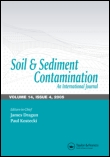
SOIL & SEDIMENT CONTAMINATION
Uncovering the impacts of pollution on our planet's foundations.SOIL & SEDIMENT CONTAMINATION is an esteemed journal published by Taylor & Francis Inc, focusing on critical research in the realms of environmental chemistry, soil science, and pollution. With an ISSN of 1532-0383 and an E-ISSN of 1549-7887, the journal serves as a vital platform for disseminating innovative studies from 1996 to 2024, offering insights that are pivotal to both academic and professional communities. Operating from the United Kingdom, this journal holds a respectable ranking within Q3 in Environmental Chemistry and Health, Toxicology and Mutagenesis, and Q2 in Soil Science as of 2023, indicating its significance in the respective fields. Researchers and professionals are encouraged to explore the journal's open access options, enhancing visibility and access to groundbreaking studies on soil and sediment contamination. With a Scopus ranking placing it in the 66th percentile for Soil Science and substantial contributions to understanding environmental pollutants, SOIL & SEDIMENT CONTAMINATION is essential for those dedicated to advancing the science and remediation of contaminated environments.
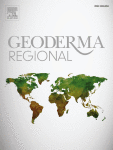
Geoderma Regional
Innovating research at the intersection of agriculture and biology.Geoderma Regional is a premier scholarly journal dedicated to advancing the field of Soil Science. Published by Elsevier in the Netherlands, this journal serves as a vital platform for disseminating high-quality, peer-reviewed research that spans the complexities of soil management, behavior, and the implications of soil processes on environmental sustainability. Since its inception in 2014, Geoderma Regional has achieved an impressive position within the academic community, holding a Q1 ranking in the field of Soil Science, placing it among the top 20% of journals in its category according to SCOPUS rankings. This journal is particularly distinguished for its significant contributions to the nexus between agriculture and biological sciences, reflected in its rank of #33 out of 159 in this field with a commendable 79th percentile. Researchers, professionals, and students alike will appreciate the journal's commitment to open discourse and innovative research agendas as it aspires to enhance our understanding of soil dynamics, addressing critical issues facing our planet.

Malaysian Journal of Soil Science
Advancing Soil Research for a Sustainable Future.The Malaysian Journal of Soil Science, published by the Malaysian Society of Soil Science, serves as a vital platform for disseminating high-quality research in the fields of Agronomy and Crop Science as well as Soil Science. With an ISSN of 1394-7990, this peer-reviewed journal has made significant strides since its establishment in 2009, currently positioned in the Q2 quartile for both categories as of 2023. The journal aims to advance knowledge surrounding soil health and management practices, particularly within the Malaysian context, while also addressing global soil science issues. Despite being based in Malaysia, it welcomes contributions from a diverse range of geographies and viewpoints, enriching the academic discourse. Researchers and practitioners in this field will find a wealth of innovative studies and findings that reflect the current trends and challenges in soil management. Given its current rankings in Scopus, the journal plays a crucial role in shaping the future of soil science, making it indispensable for anyone dedicated to advancing research and practical applications in agricultural and environmental sciences.
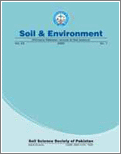
Soil & Environment
Fostering Collaboration for a Greener FutureSoil & Environment is a distinguished open access journal published by the University of Agriculture, Institute of Soil & Environmental Sciences, located in Faisalabad, Pakistan. Established in 2006, this journal has become a vital platform for disseminating pioneering research in the fields of Environmental Science and Soil Science. With an ISSN of 2074-9546, it provides a wealth of knowledge through accessible academic articles, particularly focusing on sustainable practices and innovations that impact soil and environmental health. Although currently categorized in Q4 within both Environmental Science (miscellaneous) and Soil Science, the journal is dedicated to enhancing its influence and visibility as it progresses towards convergence years that span from 2010 to 2024. Researchers, professionals, and students will find Soil & Environment an essential resource for staying informed about the latest developments and methodologies in soil conservation and environmental sustainability. By offering publicly accessible content, the journal aims to foster greater collaboration and knowledge-sharing within the global scientific community.
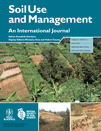
SOIL USE AND MANAGEMENT
Innovating solutions for effective soil management.SOIL USE AND MANAGEMENT is a premier academic journal published by Wiley, focusing on the critical domains of Agronomy, Crop Science, Pollution, and Soil Science. With an ISSN of 0266-0032 and an E-ISSN of 1475-2743, the journal has established itself as a vital resource in the field since its inception in 1985. Operating from its U.S. headquarters in Hoboken, NJ, SOIL USE AND MANAGEMENT boasts impressive Q1 rankings across its relevant categories, indicating its standing in the top tier of research journals. Notably, it is ranked 48th out of 406 journals in Agronomy and Crop Science and holds an 88th percentile position, as well as a commendable rank of 26th out of 159 journals in Soil Science, underscoring its influence and reach. This journal serves as an essential platform for researchers, professionals, and students dedicated to sustainable soil management practices and understanding soil's role in agricultural productivity and environmental health. Although it does not offer Open Access, its rigorous peer-review process ensures the publication of high-quality original research, reviews, and case studies critical for advancing knowledge and practice in the field. This journal is crucial for anyone engaged in soil science and its related disciplines, encouraging innovative approaches to challenges facing soil use and management today.

NUTRIENT CYCLING IN AGROECOSYSTEMS
Exploring the Dynamics of Nutrient CyclingNUTRIENT CYCLING IN AGROECOSYSTEMS is a premier academic journal published by SPRINGER, dedicated to advancing the field of agroecosystem research. With an ISSN of 1385-1314 and an E-ISSN of 1573-0867, the journal has achieved remarkable standing, being ranked in the Q1 category for both Agronomy and Crop Science and Soil Science as of 2023. Over the years, it has emerged as an essential platform for interdisciplinary research focused on nutrient management, soil health, and sustainable agriculture practices, reflecting a growing global interest in environmental sustainability. The journal's impactful contributions are highlighted by its impressive Scopus rankings, where it stands at #68/406 and in the 83rd percentile for Agronomy and Crop Science, and #37/159 with a 77th percentile in Soil Science. Researchers, professionals, and students are invited to explore open access options for published articles, facilitating wider dissemination of knowledge in nutrient cycling and its critical implications for agroecological systems. Join the discourse by submitting your research and contributing to the ongoing conversation in this vital area of study.
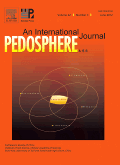
PEDOSPHERE
Advancing Soil Science for a Sustainable FuturePEDOSPHERE, published by SCIENCE PRESS, is a leading journal in the field of Soil Science, holding a prestigious position in the Q1 category as per the latest evaluations, reflecting its high impact and relevance in the domain. Established in 1996, this journal is committed to advancing our understanding of soil-related processes and their interactions with various environmental components, providing a platform for innovative and high-quality research. With an impressive rank of #13 out of 159 in the Scopus classifications for Agricultural and Biological Sciences, PEDOSPHERE reaches the 92nd percentile, indicating its significance among scholarly publications. Although the journal operates under traditional access options, it remains an essential resource for researchers, professionals, and students keen on exploring the complexities of soil dynamics and sustainability. By bridging interdisciplinary methodologies and fostering collaboration, PEDOSPHERE plays a vital role in addressing global challenges related to soil management, conservation, and ecological balance.
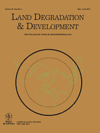
LAND DEGRADATION & DEVELOPMENT
Transforming knowledge into action for environmental stewardship.LAND DEGRADATION & DEVELOPMENT is a premier academic journal published by WILEY that has been at the forefront of research on the critical issues surrounding land degradation since its inception in 1989. With an impressive impact factor and ranked in the Q1 category across multiple fields including Development, Environmental Chemistry, Environmental Science, and Soil Science, this journal serves as an essential resource for scholars and professionals dedicated to sustainable land management and environmental conservation. Although it currently does not provide open access, its rigorous peer-review process ensures the publication of high-quality, impactful research that addresses vital environmental challenges. The journal aims to foster interdisciplinary collaboration, promote innovative solutions, and disseminate knowledge that not only informs policy but also empowers communities to combat land degradation effectively. Researchers, professionals, and students alike will find the insights and findings published in LAND DEGRADATION & DEVELOPMENT invaluable for advancing their understanding and practices within this critical field.
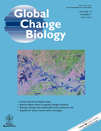
GLOBAL CHANGE BIOLOGY
Exploring the Interconnections of Life and ClimateGLOBAL CHANGE BIOLOGY, published by Wiley, is a leading journal dedicated to advancing the scientific understanding of the relationships between biological systems and global environmental changes. With an impressive impact factor placing it in the Q1 category across multiple disciplines—including Ecology, Environmental Chemistry, and Global and Planetary Change—this journal is essential for researchers, professionals, and students aiming to stay at the forefront of this dynamic field. The journal has a rich history since its inception in 1995, continually providing a platform for high-quality research that informs policy and management practices worldwide. Although it is not open access, the journal remains a valuable resource for those committed to exploring the complexities of ecological and environmental change. With a Scopus ranking of #3 in Global and Planetary Change and #6 in both Ecology and Environmental Chemistry, GLOBAL CHANGE BIOLOGY continues to shape the dialogue on the pressing environmental challenges of our time.

Frontiers in Soil Science
Exploring the vital role of soil in ecosystems.Frontiers in Soil Science, published by FRONTIERS MEDIA SA in Switzerland, is an esteemed open-access journal dedicated to advancing our understanding of soil systems and their vital role in ecosystem functioning and sustainable agricultural practices. Since its inception in 2021, this journal has quickly established itself within the scientific community, boasting a 2023 Scopus Q2 ranking in Soil Science and a notable percentile of 41 among its peers. Researchers and practitioners in the field will find a wide array of original research, reviews, and contributions that address key topics such as soil health, carbon sequestration, and nutrient cycling. With a commitment to fostering collaboration and dissemination of knowledge, Frontiers in Soil Science serves as a vital resource for professionals, researchers, and students who aspire to innovate and lead in soil science research.